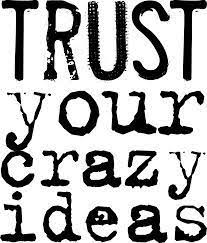If you don’t believe me on the fact that your employees and customers are your best technology, please rethink it after you read these two stories.
Story number 1:
While doing some consulting work for a high-end department store I met Jeff (not his real name). Before we met, Jeff had no prior knowledge of my work or that I would be there that day. He noted that he was a personal shopper and was always the top seller at this location and often top in the region. This was all confirmed by one of the co-workers in a later interview. He was loved by his shoppers! This was also confirmed by his co-worker, but more powerfully by his leader and the two shoppers that I personally ran into that day as we walked his work area.
Among other things, many very positive, Jeff noted the challenge of meeting his customer’s needs at times. Specifically, the inventory that his store received from “corporate algorithms” didn’t always match the customers desired items. This was especially frustrating when they saw it online but never in the store where they could try it on. Jeff shared this feedback with his leader and others hoping the algorithm could be modified to include the demographics and desired styles of a store many hundreds of miles away because Jeff knew that stores inventory better matched online and his customer. These adjustments, if actioned at all, were slow to take effect.
Jeff solution was to know his customers so well that when he saw new items online, that he knew they would want to try, he would personally buy them, call the customers to come to the store to try them on and return the very few items the customer didn’t end up wanting. At one time his personal credit card balance was at $65,000 because of this solution. To his customers, this solution kept them happy and coming back because they got the items they wanted. They seemed to know Jeff was pulling some strings but didn’t know the total of the solution.
Story number 2, this one is a little personal:
I had 3 to-dos before noon preschooler pick-up; gym, shower, and visit my favorite Swedish furniture store. As always I tried to squeeze in 4 more things to be uber efficient. That usually means then dropping the gym (ok, enough of my personal problems), but this morning that meant dropping the shower and changing clothes. So after the gym, straight to the store. A cart loaded with $500+ of items and in the check-out line in record time. Reached in my pocket for my wallet…no wallet! I came straight from the gym and while only a crazy person would exercise without their phone, I wished I would have been the crazy person that exercised with his wallet. I had ApplePay and Venmo on my phone but this store only took Samsung pay.
Begging for some solution from the cashier, it seemed I’d have to abandon the cart of items, go get the preschooler, get the wallet and come back. I was beyond defeated. Then I saw the guy in line behind me wearing the t-shirt of a local university. The local university which made me think he might just be smarter, cheaper and nicer than the average shopper. I asked, “Do you want to make $10?” He said sure. Then I asked, “Do you have Venmo?” He said yes. So I struck the deal, “I’ll pay you $10 plus whatever this all rings up to. You’ll see the money in Venmo before you swipe your card. You just have to promise to me and this cashier that you’ll swipe your card when Venmo says you have my money. Deal?”
I walked out of the store 2 minutes later only a little mad that he got the credit card points and that I didn’t start by asking if he wanted to make $5, but really mostly happy.
If those two stories don’t convince you, at least hang with me for a few points on the matter.
- Don’t think for a second that your very best employees, that love and care for your customers the most, aren’t doing something like Jeff is doing every day to try and keep your customers for you. It may not be as extreme as what Jeff is doing, but it is making the difference in your customers lives and you owe it to your employees, your customers and yourself to try and find out what these things are and 1) fix them for your employees sake or 2) thank the employee for working in the grey on behalf of you and for the customer.
- Know that these things exist. Therefore, reward your employees and customers when they find a creative way to keep making you money. Find some meaningful thank you for them. Where possible, let them lead a partnership with you to find a permanent fix for the issue they keep solving with a workaround. Where you can’t reasonably find a fix, let them know you support and appreciate their creativity and won’t stand in the way of it in any way going forward.
- Help your employees and customers keep the big picture in mind. I don’t know what that cart of over $500 of items looked like to that cashier, but to me, it looked like a lot of things. It looked like a huge pain for someone to restock or store until my return to the store. If I returned, right?!? Because it also looked like a customer frustration point of, “Hello!!! It’s 2018! I haven’t pulled out my physical credit card in two weeks…I’m done with you!”. That’s an overreaction, but hey customers are going to overreact and it helps us be better and find the real pain points that we need to address. That cart also looked to me like a missed motivation or training moment between that company and the employee. I’d think getting $500 worth of items seamlessly out of the store would be a pretty big joint motivation, but this employee didn’t seem overly invested in that outcome. Or at least not as invested as I was as the customer.
- An employee not as invested in the company as the customer
is, is a huge red flag and needs to be understood and corrected as soon as possible.
Make sure you create the culture and environment where sharing these type of crazy solutions is natural and encouraged so you can reward where needed, fix where you can and remove as many pain points as possible.





What is being talked about…